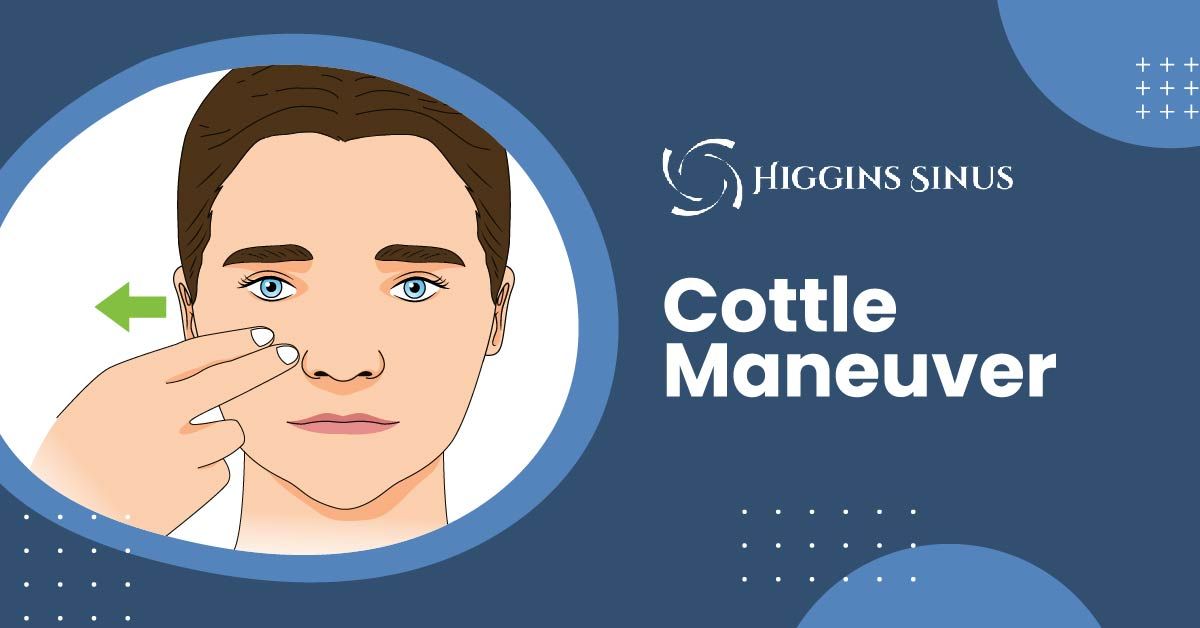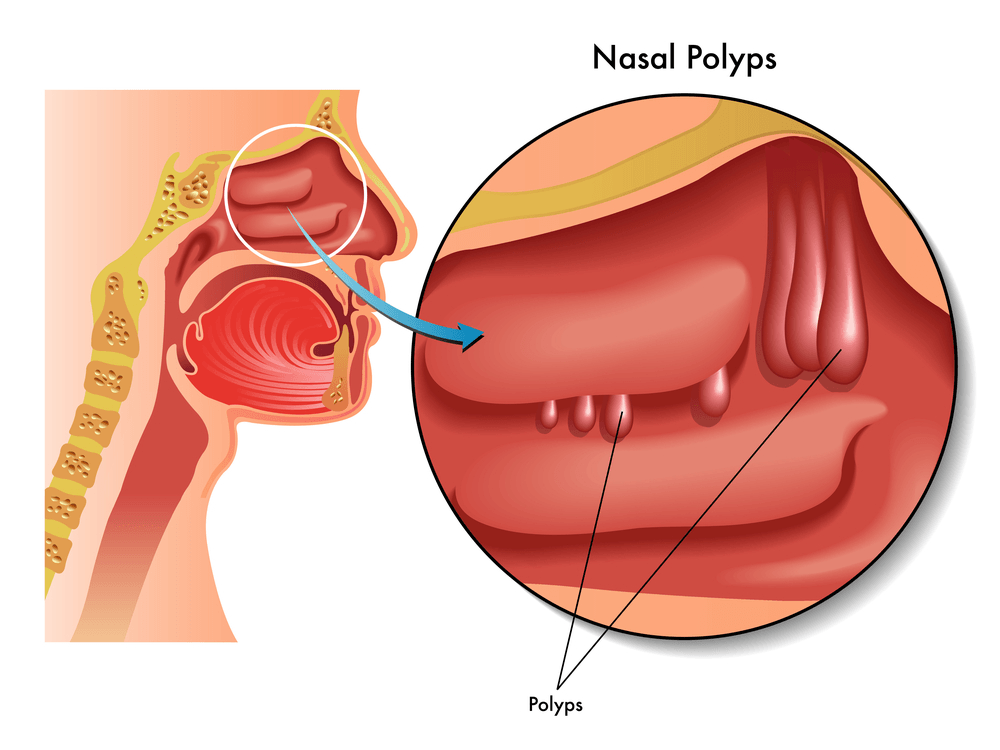What is a Cottle Maneuver?
Nasal obstruction is uncomfortable and greatly impacts the quality of life of millions of people dealing with the condition. Various factors, such as external nasal deformities, septal deviation, turbinate hypertrophy, and nasal polyps can compromise the nasal airway. An important aspect of evaluating nasal obstruction is identifying the specific area of obstruction in the external and internal nasal valves. The nasal valves regulate nasal airflow in the front of the nose, and any narrowing of these areas can lead to nasal obstruction.
A diagnostic exam that can help assess nasal valve incompetence is the Cottle maneuver. This maneuver involves a simple and easily applied method to determine the presence of external and/or internal nasal valve compromise. Read on to learn more.

Understanding Nasal Obstruction
Nasal obstruction is a condition that requires a comprehensive assessment of the many anatomic and physiologic factors that cause this issue. The nasal valves, both internal and external, are lesser-known areas of the nose that are important to assess when identifying the area of obstruction and planning appropriate interventions.
Accurate diagnosis of nasal obstruction is important for guiding appropriate treatment and improving patient outcomes. Issues like allergies, deviated septum, nasal polyps, sinus infections, or structural abnormalities can contribute to varying degrees. Otolaryngologists utilize a combination of medical history, physical examination, and nasal endoscopy to identify the potential underlying causes of an individual's nasal obstruction. During the physical examination, the healthcare provider inspects the external nasal structures, looking for any signs of deformity or swelling. They may also examine the interior of the nose using a nasal speculum or nasal endoscopy to visualize the nasal passages. This exam allows them to assess for the presence of nasal polyps, deviated septum, or other internal abnormalities. In certain cases, further diagnostic tests may be necessary to determine the cause of the nasal obstruction more precisely. These tests may include imaging studies such as computed tomography (CT) scans or magnetic resonance imaging (MRI), which provide detailed images of the sinonasal structures. Allergy testing may also be conducted to identify specific allergens that might be contributing to the obstruction.
Once an accurate diagnosis is established, appropriate treatment options can be discussed. Treatment may involve medical interventions, such as nasal sprays, antihistamines, or antibiotics, depending on the underlying cause. Surgical interventions, such as septoplasty to correct a deviated septum or sinus surgery to remove nasal polyps, may also be considered.
In the next section, we will dive deeper into how the Cottle maneuver is used to evaluate the nasal valve area to predict surgical outcomes and its effectiveness in improving nasal airflow.
What is the Cottle Maneuver?
Definition and Purpose of the Cottle Maneuver
The Cottle Maneuver, named after Dr. Richard Cottle, is a clinical test used in the diagnosis and treatment of nasal valve incompetence. This maneuver assesses the internal and external nasal valves to determine the presence of obstruction and guide appropriate surgical techniques. It is a subjective test that helps identify the location of congestion in the nasal airway. The maneuver helps determine if the congestion is caused by a collapsed or narrow nasal valve, which is the area at the entrance of the nose.
How to Perform the Cottle Maneuver
To perform the Cottle Maneuver, follow these steps:
- Place one or two fingertips on the cheeks on either side of the nose.
- Gently press and pull outward to widen the nasal valve.
- Observe if the nasal airflow improves.
If performing the Cottle Maneuver results in easier breathing through the nose, it suggests that the nasal obstruction is likely in the nasal valve area. It is important to consult a doctor for a detailed diagnosis and appropriate treatment options based on the specific findings.
Interpreting the Results of the Cottle Maneuver
The results of the Cottle Maneuver can provide valuable information in diagnosing and planning the treatment for nasal obstruction. Depending on the response to the maneuver, healthcare professionals can interpret the results as follows:
- Positive Cottle Maneuver: If the nasal airflow improves during the maneuver, it suggests either a dynamic collapse of the nasal valve or an improvement in nasal airflow through other anatomical areas.
- Negative Cottle Maneuver: If the nasal airflow does not improve or there is no change in nasal obstruction during the maneuver, it may indicate a different cause of nasal obstruction that requires further evaluation.
By carefully interpreting the results of the Cottle Maneuver, healthcare professionals can determine the appropriate course of action for patients with nasal obstruction.
Clinical Applications of the Cottle Maneuver
Role of the Cottle Maneuver in Diagnosis and Treatment
The Cottle Maneuver helps in the diagnosis and treatment of nasal valve incompetence. By gently manipulating the nasal structures, otolaryngologists can assess the nasal airflow and identify areas of obstruction. This information helps determine the most suitable surgical interventions, such as batten or spreader grafts, nasal valve implants, or radiofrequency treatment of the nasal valves to correct the nasal valve collapse and improve nasal airflow. The Cottle Maneuver is performed during the preoperative evaluation to select the appropriate surgical technique and predict postoperative outcomes.
Benefits and Limitations of the Cottle Maneuver
The Cottle Maneuver offers several benefits in the diagnosis and treatment of nasal valve incompetence. It is a simple and easily applied method that can be performed in an office setting without the need for objective instruments. The maneuver provides valuable insights into the specific anatomic problems contributing to nasal obstruction, allowing for targeted surgical planning and improved functional outcomes.
However, it's important to note that the Cottle Maneuver has some limitations. It is a subjective test that relies on patient feedback and the healthcare professional's interpretation. The results may vary based on the skill and experience of the examiner. Additionally, the maneuver primarily focuses on evaluating the external and internal nasal valves and may not capture other factors contributing to nasal obstruction.
Conclusion
The Cottle Maneuver is a simple and commonly used physical examination test to assess nasal obstruction and diagnose nasal valve collapse or narrowing. This maneuver involves applying tension on the skin to the cheek to widen the nasal valve and improve nasal airflow. The presence of a positive Cottle Maneuver suggests the need for surgical intervention to address the nasal valve.
Thomas S. Higgins, MD, MSPH
Father. Husband. Sinusitis Nerd.















